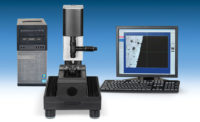BOISE, ID-In a project commissioned by Lockheed Martin Aeronautics, Positron Systems demonstrated that its Photon Induced Positron Annihilation (PIPA) and related technologies can measure the effectiveness of cold expansion techniques in metal alloys. The company says that this capability will lead to improved inspection intervals and lower maintenance costs in the aerospace sector. Further, with PIPA's multi-layer damage assessment capability, early damage in subsurface layers can be detected, thereby providing a method for quantifying damage without component disassembly.
Many fastener holes in aerospace components are "cold worked" to produce a compressive residual stress field around the hole to improve resistance to fatigue cracking. Other nondestructive testing methods cannot accurately assess the effectiveness of cold working on fastener holes in aluminum alloys because of their material characteristics. Further, current techniques are not easily deployed in the field to inspect in-use components.
Positron Systems utilized its PIPA and Distributed Source Positron Annihilation technologies to demonstrate that it can detect and differentiate beneficial residual stress in cold-worked fastener holes because of applied expansion levels ranging incrementally from 0% to 5.2% in 2000 series aluminum alloy. These technologies have also been shown to be effective in quantifying the effects of surface treatments such as shot peening. This capability was tested in projects completed for the National Science Foundation and other groups. These demonstrated capabilities are a significant first step toward the eventual goal of deploying a unit to inspect fastener holes and other surface treatments in the field.
Results of the Lockheed Martin cold expansion study were presented in a paper during the 2003 United States Air Force (USAF) Aircraft Structural Integrity Program (ASIP) Conference in Savannah, GA. The paper is available for download at www.positronsystems.com.

